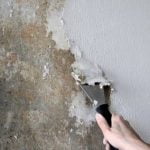Is your home plagued with weak or unreliable wireless signal? In this article, we will explore how to improve your wireless signal in your home. A strong and reliable wireless signal is essential for a seamless internet experience, allowing you to stream, work and stay connected without frustrating interruptions. Whether you’re struggling with dead zones or sluggish Wi-Fi, we’ve got you covered with practical solutions to enhance your home’s wireless connectivity.
When it comes to enjoying uninterrupted internet access in every corner of your home, the strength of your wireless signal plays a crucial role. In this introductory section, we will delve into the importance of a strong wireless signal and set the stage for understanding the various factors that can impact its performance.
From assessing your current signal strength to choosing the right router and optimizing its placement, we’ll guide you through the steps to elevate your home’s wireless connectivity.
Having a weak wireless signal can be frustrating and limiting, but fear not. With our comprehensive guide to improving your wireless signal in your home, you’ll be equipped with the knowledge and strategies needed to banish those pesky dead zones and enjoy reliable Wi-Fi throughout your living space. Let’s get started on the journey towards boosting your home’s wireless signal and maximizing its potential for seamless connectivity.
Assessing Your Current Signal Strength
When it comes to improving your wireless signal at home, the first step is to assess the current strength of your signal. Fortunately, there are several methods you can use to check the signal strength in different areas of your home.
One common way is to use a smartphone or laptop to see how many bars of Wi-Fi signal you have in various locations. Another method is to use a Wi-Fi analyzer app, which provides a more detailed look at the strength and quality of your wireless signal.
In addition to using these tools, you can also log into your router’s settings to view the signal strength and quality metrics. This will give you a more technical and accurate understanding of your wireless signal performance. By conducting these assessments, you can identify weak spots in your home where the signal is not strong enough and take targeted steps to address them.
Moreover, it’s important to consider that factors like distance from the router, obstructions such as walls or furniture, and interference from other electronic devices can all contribute to weak wireless signals in certain areas of your home. Understanding these factors will help you make informed decisions on how best to improve your wireless signal throughout your living space.
| Method | Description |
|---|---|
| Using a smartphone or laptop | Check Wi-Fi bars in different areas of the house |
| Wi-Fi analyzer app | Provides detailed overview of signal strength and quality |
| Router settings | Access technical information about wireless signal performance |
Identifying the Culprits
When it comes to ensuring a strong wireless signal in your home, it’s essential to identify the common factors that can weaken your signal. By understanding these culprits, you can take proactive steps to improve your wireless connection and enhance the overall performance of your network.
Here are some common factors that can contribute to a weakened wireless signal in your home:
- Physical barriers: Walls, floors, and other physical obstructions can absorb or block wireless signals, leading to decreased coverage and performance.
- Interference from other devices: Cordless phones, microwave ovens, and even neighboring Wi-Fi networks can cause interference and disrupt your wireless signal.
- Outdated or faulty equipment: Older routers, modem-router combinations, and network adapters may not be equipped to handle the demands of modern devices and applications, resulting in a weaker signal.
Now that you understand some of the common culprits behind a weakened wireless signal, it’s important to address these issues in order to improve the overall performance of your network. By taking proactive steps to mitigate these factors, you can optimize your wireless signal and enjoy a stronger connection throughout your home.
To improve your wireless signal in your home, consider the following strategies:
- Invest in a high-quality router with advanced features such as beamforming technology and multiple antennas for improved coverage.
- Strategically position your router in a central location within your home to ensure maximum coverage and minimize obstructions.
- Consider using signal boosters or extenders to enhance the range and strength of your wireless network in areas with poor coverage.
By addressing these common factors that can weaken your wireless signal and implementing these strategies for improvement, you can effectively enhance the performance of your home network.
Choosing the Right Router
When it comes to improving your wireless signal in your home, selecting the right router is crucial. A high-quality router can significantly enhance the strength and reliability of your Wi-Fi signal, providing better coverage throughout your home. Here are some tips for choosing the best router for your specific needs.
Assess Your Internet Needs
Before purchasing a new router, it’s important to assess your internet usage and needs. Consider the number of devices that will be connected to the network, as well as the activities being done online. For households with multiple users streaming content, gaming, or video conferencing, a more powerful router with advanced features may be necessary to handle the demand.
Take Note of Wireless Standards
Wireless standards such as 802.11ac and 802.11ax (Wi-Fi 6) offer improved speed and performance compared to older standards like 802.11n. When selecting a router, opt for one that supports the latest wireless standard compatible with your devices to ensure optimal performance.
Consider Simultaneous Dual-Band or Tri-Band Routers
Simultaneous dual-band routers operate on both 2.4GHz and 5GHz frequencies, providing flexibility for different types of devices and applications. Tri-band routers add an additional 5GHz band for even less interference and congestion in busy networks.
By following these tips when choosing a new router, you can significantly improve your wireless signal in your home.
Optimizing Your Router Placement
When it comes to improving your wireless signal in your home, one of the most important factors to consider is the placement of your router. The location of your router can significantly impact the strength and reach of your wireless signal, so it’s crucial to strategically position it for maximum coverage.
Assessing Your Current Router Placement
Before making any changes, it’s essential to assess your current router placement and signal strength. Use a Wi-Fi analyzer app or tool to determine the areas in your home with weak signal reception. This will help you identify potential dead zones and areas that need improved coverage.
Once you’ve identified the weak spots in your home, it’s time to strategically position your router for maximum coverage. Ideally, the router should be placed in a central location within your home to ensure equal coverage in all areas. Additionally, elevating the router and placing it away from obstructions such as walls and large furniture can also help improve signal strength.
In some cases, simply repositioning your router may not be enough to achieve optimal coverage. Consider investing in mounting brackets or shelves to elevate the router and ensure it’s positioned at an ideal height for better signal propagation. Additionally, exploring alternative placement options such as installing a mesh network system or using Wi-Fi extenders can further enhance the coverage and performance of your wireless signal throughout your home.
By strategically positioning your router for maximum coverage, you can effectively improve the strength and reach of your wireless signal in your home, ensuring better connectivity for all devices throughout every area of your living space.
Enhancing Your Signal With Technology
When it comes to improving your wireless signal in your home, one effective solution is to explore the use of signal boosters and extenders. These devices are designed to amplify and expand the coverage of your existing wireless network, providing stronger and more reliable connectivity throughout your home. By strategically placing signal boosters or extenders in areas where the signal is weak, you can effectively eliminate dead zones and ensure a consistent internet connection in every room.
There are several types of signal boosters and extenders available on the market, each with its own set of features and capabilities. Some models are designed specifically for extending the range of your existing router, while others operate as standalone devices that create a separate network within your home.
Before selecting a signal booster or extender, it’s important to consider factors such as the size of your home, the layout of your space, and the specific areas where you need to improve your wireless signal.
In addition to providing extended coverage, many signal boosters and extenders also offer additional features such as Ethernet ports for wired connections, dual-band support for improved performance, and advanced security settings. When used in conjunction with a high-quality router, these devices can significantly enhance the overall strength and reliability of your wireless network.
| Signal Booster/Extender Features | Benefits |
|---|---|
| Dual-band support | Improved performance on both 2.4GHz and 5GHz bands |
| Ethernet ports | Ability to connect wired devices for faster speeds |
| Advanced security settings | Enhanced protection against unauthorized access |
Eliminating Interference
Interference from other devices and appliances can significantly weaken your wireless signal, resulting in slow internet speeds and spotty connections. Understanding the sources of interference and taking proactive measures to minimize their impact is essential for improving your wireless signal in your home.
One common source of interference is household appliances such as microwave ovens, cordless phones, and baby monitors. These devices operate on the same frequency band as many wireless routers, which can lead to signal interference. To minimize this interference, consider relocating your router away from these appliances or opting for a dual-band router that operates on both 2.4GHz and 5GHz frequencies.
Another potential source of interference is neighboring Wi-Fi networks. If you live in a crowded urban area or apartment building, the signals from nearby networks can overlap with yours, leading to decreased performance. Utilizing Wi-Fi scanning tools or apps can help you identify which channels are the least congested, allowing you to adjust your router’s settings for optimal performance.
Furthermore, electronic devices such as Bluetooth speakers, game consoles, and smart home gadgets can also contribute to signal interference. To mitigate this interference, try to position your router away from these devices or invest in shielding materials that can block their signals. Additionally, keeping firmware updated on all your devices and ensuring that they are equipped with the latest Wi-Fi standards can help reduce interference and improve overall signal strength in your home.
Regular Maintenance and Troubleshooting
Maintaining a strong wireless signal in your home requires regular maintenance and troubleshooting to ensure optimal performance. Here are some useful tips for keeping your wireless signal strong and addressing common issues that may arise:
- Regularly update your router’s firmware: Manufacturers often release firmware updates to improve the performance and security of their routers. Check for updates regularly and install them to keep your router functioning at its best.
- Monitor your network usage: If you have multiple devices connected to your wireless network, excessive usage by one device can impact the performance for others. Use a network monitoring tool to keep track of bandwidth usage and identify any devices that may be hogging the connection.
- Perform regular speed tests: Use online speed testing tools to measure the performance of your wireless connection. If you notice a significant drop in speed, it may indicate an issue with your router or interference from other devices.
In addition to regular maintenance, it’s important to troubleshoot common issues that can affect your wireless signal. Here are some tips for addressing these issues:
- Check for signal interference: Other electronic devices such as cordless phones, baby monitors, and microwave ovens can interfere with your wireless signal. Keep these devices away from your router and consider using wired connections for sensitive tasks.
- Adjust the channel settings on your router: Routers operate on different channels within the Wi-Fi spectrum. If you live in a densely populated area, changing the channel settings on your router can help minimize interference from other nearby networks.
- Contact your internet service provider (ISP): If you’ve tried troubleshooting on your own without success, it’s worth reaching out to your ISP for assistance. They may be able to diagnose issues with your connection or provide guidance on optimizing your setup.
By following these regular maintenance tips and implementing troubleshooting strategies, you can maintain a strong wireless signal in your home and address common issues as they arise. Remember that staying proactive and informed is crucial for achieving optimal wireless performance.
Conclusion
In conclusion, having a strong wireless signal in your home is crucial for seamless internet connectivity and smooth performance of your devices. By following the tips provided in this guide, you can significantly improve your wireless signal and enhance your overall internet experience.
Assessing your current signal strength, identifying potential sources of interference, and strategically placing your router are all important steps in improving your wireless signal. Additionally, choosing the right router for your specific needs and considering signal boosters or extenders can further enhance the coverage and reliability of your wireless network.
It’s also important to regularly maintain and troubleshoot your wireless network to ensure that it continues to perform optimally. By implementing these measures, you can create a strong and reliable wireless signal in your home, providing you with a stable connection for all of your internet needs. Implementing these strategies can ultimately lead to a more enjoyable online experience.
Frequently Asked Questions
How Can I Improve My WiFi Signal Strength at Home?
You can improve your WiFi signal strength at home by positioning your router in a central location, away from obstructions. You can also use a WiFi extender or booster to enhance the coverage in dead zones.
How Can I Increase My Wireless Range in My House?
Increasing your wireless range in your house can be done by upgrading to a newer router with better range capabilities. Additionally, you can install additional access points strategically throughout your house to ensure consistent coverage.
How Can I Make My House Signal Stronger?
To make your house signal stronger, consider using mesh WiFi systems that utilize multiple access points to provide seamless coverage. Additionally, reducing interference from other devices and minimizing obstructions can help improve the overall signal strength in your home.

I’m thrilled to have you here as a part of the Remodeling Top community. This is where my journey as an architect and remodeling enthusiast intersects with your passion for transforming houses into dream homes.





